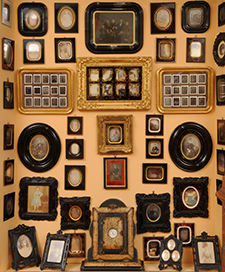Photography Hall. Collection of Daguerreotypes (Hall 8)

This is one of the few public collections that allows us to trace the evolution of these primitive photographic techniques-the daguerreotype, the ambrotype and the tintype. There are 90 photos here, some of extraordinary quality.
Let's take a quick look at the daguerreotype, a veritable pioneer among photographic techniques. Its name comes from its inventor, Frenchman Louis-Jacques Mandé Daguerre. His discovery was used between 1839 and 1860. It was widely accepted in Catalonia from the very beginning. A shot taken of Barcelona on November 10th, 1839, just a few months after the new invention was presented in Paris, is considered the first daguerreotype taken in Spain.
But first, we must explain how this photographic procedure works. A coat of silver nitrate is spread over a copper plate, which is then introduced into the camera obscura. Following a long exposure to light, the image is captured and fixed onto the plate. In spite of the quality of the resulting image, it was not possible to make copies using this new technique, and the long exposures lasted as long as twenty minutes, making it uncomfortable for those sitting for portraits. Landscape daguerreotypes, or those featuring views of cities, were of great interest to the public. Many photographic studios began to use it in Catalonia.
The daguerreotype explains the appearance of the post-mortem portrait, which became quite popular in the mid 19th century. It might come as a surprise to today's audiences that families commissioned these works in order to preserve the memory of the deceased. In the largest showcase in this gallery, there are two examples of post-mortem portraits of children-two little girls laid out on the bed, dressed in white and adorned with flowers.


